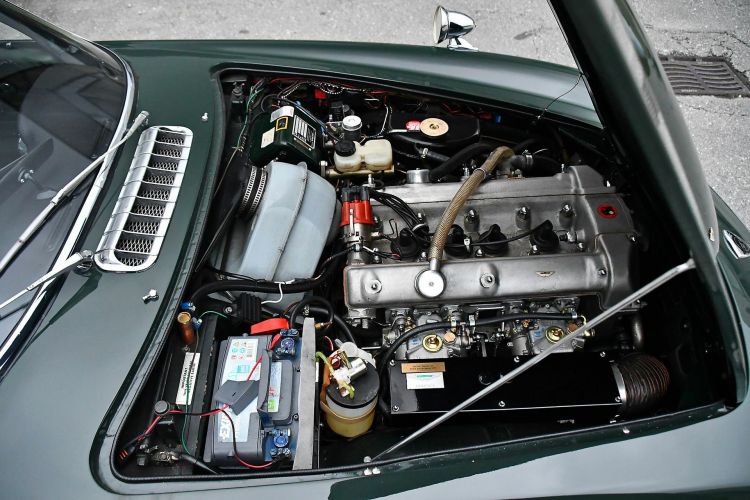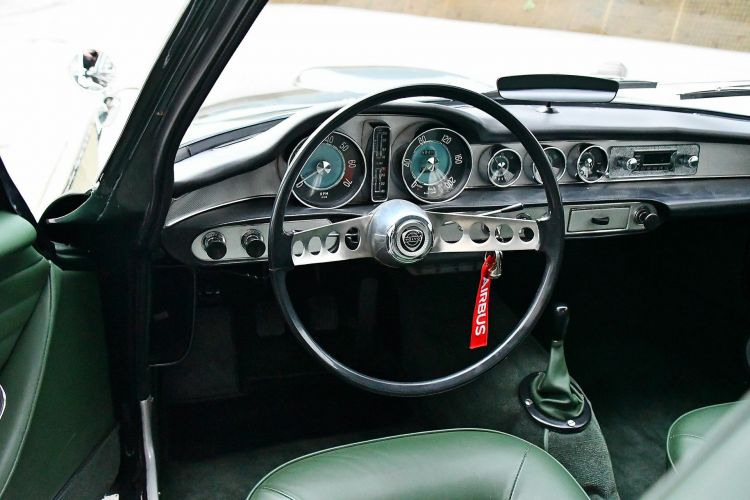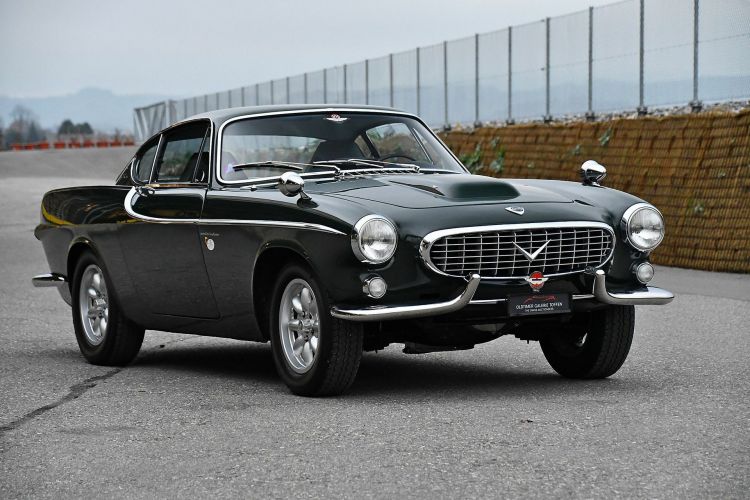The history of the Volvo P1800 began in the distant year 1957, when it was designed by Pelle Petterson while working for Pietro Frua in Italy. The P1800 was presented in 1960 in Brussels, and what many people ignore is that its first series were assembled in the UK by Jensen Motors. The Volvo P1800’s British connection could have gone much deeper and changed Volvo’s history forever. In a parallel universe, the P1800 would have boasted of a promising Aston Martin engine four cylinder
Sir David Brown, founder of Aston Martin, believed that the Volvo P1800’s 90PS 1.8-litre engine was insufficient. Such a beautiful, light and sporty car could not have such a low-power engine in its bowels. And so, he devised an interesting business strategy. They would develop a new four-cylinder engine, on a par with the Volvo P1800, and could sell it not only to Volvo, but also to many other car brands. The development of this engine was called “project DP208” and was entrusted to none other than John Wyre.
Aston Martin could have supplied engines to many European manufacturers.
John Wyre was one of the architects of Aston Martin’s victory at Le Mans in 1959, and his team also included legendary engineer Tadek Marek, the project’s technical lead. The team had a budget of £3,000 at their disposal, and to develop the engine, they decided from a block of 3.7 liters and six cylinders in line of an Aston Martin DB4. to that block two cylinders were “amputated”, in addition to completely redesigning the crankshaft, camshafts and crankcase. They did not modify pistons, connecting rods or valves.
The resulting engine was a 2.5-liter naturally aspirated four-cylinder with 151 horsepower. Three engines were built and one of them was mounted in a Volvo P1800, ordered from the Volvo importer in the UK. The engine was thoroughly tested for a year, and was even driven by Tadek Marek’s wife on a regular basis. Unfortunately, meanwhile, the agreement between Volvo and Jensen Motors was broken. Volvo was dissatisfied with the quality of Jensen, especially with regard to the finishing and painting of the bodies.
Maintaining this exceptional unit is not complex: Aston Martin or Volvo parts are easy to find.
The disagreement was so serious that Volvo fully moved production to Gothenburg, never looking back. As for the Aston Martin engine, it failed to substantially reduce the weight of the P1800 and furthermore, it was very expensive for Volvo, which was trying to break into the US market by offering a competitive price of $4,000 for the P1800. The DP208 project was canceled in 1964. The test mule was destroyed and the two remaining engines were used in other projects. In 1974 his documentary trail was lost.
In fact, it was believed that these engines no longer existed. However, in 2003, the third engine was found and acquired by Beat Ross, a Swiss specialist in Aston Martin vehicles. In 2005, after investing close to 200,000 Swiss francs, Beat Ross was able to put an Aston Martin-powered Volvo P1800 back on the road. He started from the base of a UK-built P1800, and had to manufacture a multitude of parts to adapt the engine to the platform. There were no plans, no documentation to support the installation of the engine in the Swedish coupe.
The car drives surprisingly normally, with much more character than the original engine.
The P1800 in question was painted in classic British racing green, with a nice green leather interior. Although the unit was a first-series P1800, Beat Ross upgraded it by adding power brakes and seats with headrests, items that were only available in the last few years of production. This rare Volvo P1800 is now for sale, and will be auctioned on December 29. It is estimated that this unit will have a sale price of between 175,000 and 225,000 Swiss francs (between 178,000 and 227,000 euros).
Photos: Oldtimer Gallerie More information: Classic Driver



